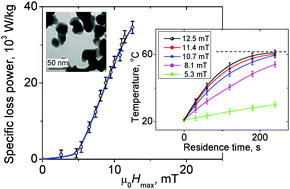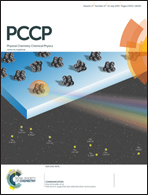Mechanisms of AC losses in magnetic fluids based on substituted manganites
Abstract
The ability to controllably tune the heating efficiency of magnetic nanoparticles in an AC magnetic field is highly desirable for their application as mediators of magnetic hyperthermia. Traditional approaches to understand and govern the behavior of hyperthermia mediators include a combination of quasistatic and high-frequency (∼100 kHz) magnetic measurements with subsequent simulation of underlying processes. In this paper, we draw attention to the frequently overlooked fact that for an ensemble of magnetic nanoparticles, there is no straightforward complementarity between the dynamic characteristics obtained under different experimental conditions, as well as between corresponding underlying processes. This paper analyzes mechanisms of AC losses in a fluid based on magnetic nanoparticles, with special emphasis on the domains of their validity, and shows that the mechanisms may become qualitatively different as experimental conditions change from magnetostatic to high-frequency ones. Further, the work highlights new important features which can result from the employment of the refined approaches to interpret experimental results obtained on magnetic fluids based on La1−xSrxMnO3 (x = 0.22) nanoparticles. The gained knowledge provides necessary guidelines for tailoring the properties of magnetic nanoparticles to the needs of self-controlled magnetic hyperthermia.


 Please wait while we load your content...
Please wait while we load your content...